Facebook ad mistakes can be pretty costly when you’re starting to advertise your Shopify store. The good news is everyone makes the same mistakes at the beginning, so instead of burning hundreds (or thousands) of ad dollars, you can read this article instead.

We carried out a Shopify Facebook ads audit for four online stores and found common flaws across their ad accounts.
The shops that we did campaign audits for are somewhat successful. They’re making sales, yet they don’t really know how to promote their Shopify stores on Facebook properly. This is pretty normal – Facebook Business Manager can be a pretty mysterious place at the beginning.
But fear no more! Once you’re done reading our findings, you will know how to run great Facebook ads and attract paying customers.
If you’re a total newbie to creating Facebook ads, you may also want to read our 6 tips on Facebook advertising for beginners.
1. Only focusing on reach campaigns

Our Facebook advertising audits revealed that Shopify store owners tend to limit themselves with only running reach campaigns. While reach campaigns are essential for building brand awareness, in the long run, you’ll not be getting the sales you need if all your Facebook ads are built on cold audiences.
SOLUTION #1: Invest more budget into remarketing campaigns
Remarketing campaigns usually boost sales since many users decide to buy something after they know the brand and have seen the product they are interested in at least a few times.
When you keep seeing an ad for a lovely pair of shoes you were checking during your lunch break a few days ago, it’s not fate, it’s remarketing.
Remarketing campaigns are highly effective since people usually make purchase decisions after they already know the brand and have seen the product they are interested in at least a few times. 78% of online shoppers say “personally appropriate content from brands” boosts their purchase intent.
Make sure you have your Facebook pixel sorted out so you can build your remarketing audiences and boost your sales.
Here are a few tips to take your remarketing campaigns to the next level.
PRO TIP #1: Have a constant stream of traffic
There must be a constant stream of traffic coming to your online store for remarketing campaigns to work. Always have a reach campaign complementing your remarketing campaigns.
PRO TIP #2: Have reach and remarketing campaigns without a set end date
It’s also recommended to have reach and remarketing campaigns without a set end date. Evergreen campaigns allow Facebook algorithms to finish the learning phase. Facebook can optimize your ads to drive high converting traffic at the lowest cost available.
SOLUTION #2: Run Dynamic Product Ads
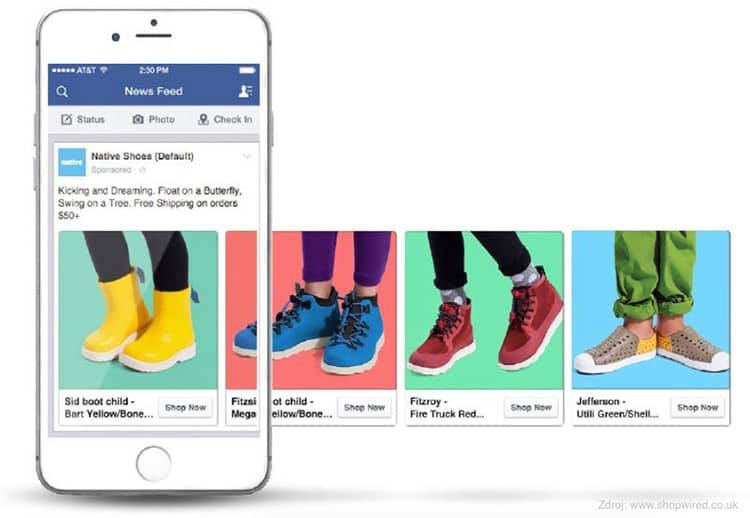
Our Facebook ads audit also showed that Shopify store owners tend to ignore Dynamic Product Ads (DPA). It’s a shame since dynamic ads are one of the most effective for e-commerce businesses.
DPAs automatically show the right products to your hot and cod audiences – people who have already taken specific actions on your store or are just getting to know you.
For example, once a luxury sunglasses brand, 9Five, implemented DPAs, they saw a 3.8X return on their ad spend. Their cost per acquisition was also 40% cheaper than their original goal.
These ads are easy to launch, too. You simply need to upload your product catalog and set up your campaign once. That’s it! Your dynamic ad campaign will keep on running and matching the right people with the products they’re interested in.
2. Targeting people worldwide with a low budget

Worldwide targeting can help you identify the cheapest countries to target. However, it requires a huge investment to have truly representative data and make informed decisions. A few more sales in one country than the other doesn’t really say much.
On the other hand, you can still get a sense of direction even with a smaller budget – you just need to start smaller. Instead of going for the whole world, start with a few countries that make the most sense for your Shopify store. This way, you’ll get more representative data with your available budget.
3. Not narrowing down your targeting

Facebook offers amazing targeting capabilities. For instance, you can target a group of women in a specific age range who recently got engaged and use their iPhones to look at cute dog videos. Or you can target dads of two who like a specific magazine and recently had a personal anniversary. You get the picture.
That’s why it really saddens us to find cases where Shopify store owners who sell clothes simply target people interested in fashion. You could apply many more criteria to your targeting and reach more specific audiences that are more likely to convert.
For example, let’s say you’re selling laptop cases on your Shopify store. Instead of targeting all laptop owners with the same creatives, you could create specific audiences for different laptop brands and run personalized ads representing specific product sets for those brands.
You could also narrow down your targeting even further and target people with related interests, such as “phone accessories” or “online shipping.” It would allow reaching customers who have combined interests in two or more categories. This way, you could pinpoint the audience which would bring you a better return on investment (ROI).
PRO TIP #1: Use only one type of targeting on the ad set level
It is recommended to use only one type of targeting on the ad set level (e.g., lookalike targeting, customer list targeting, or interest targeting). This will allow for more reliable testing of the audience. Once the best performing audience is established, you can apply additional targeting to it.
4. Not excluding purchasers from saved audiences
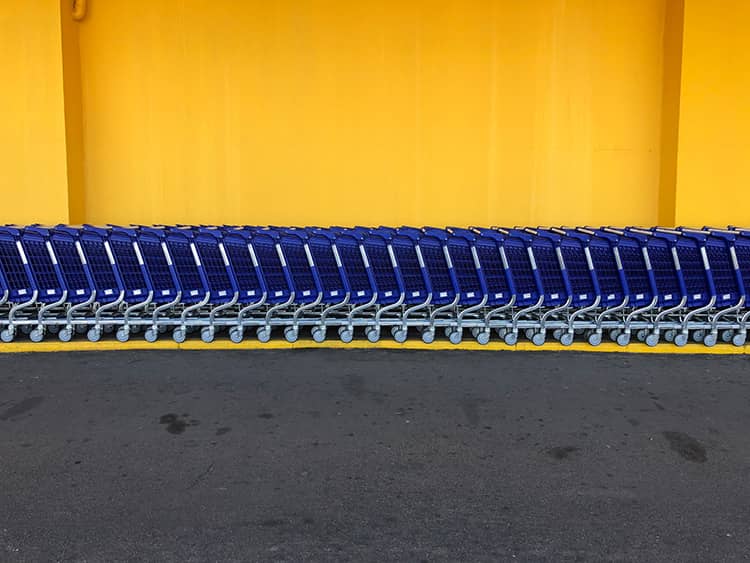
Retargeting is great. It helps you to give your potential customers the final push they need. However, spamming your actual customers with the ads of the things they recently bought is not such a good idea.
Luckily, you can avoid this situation with the help of the Facebook pixel – you can exclude purchasers from your saved audiences or at the ad set level. You’ll also make sure you don’t waste your marketing budget on people who are not likely to buy from you now.
However, don’t forget that there are cases when it can be profitable to target your recent customers. For example, you can try to run cross-sell campaigns.
5. Creating lookalikes based on website traffic

Our Facebook ads audit also showed that some Shopify stores create their lookalike audiences not from valuable events like “purchases” or “add to cart” but based on website traffic. This strategy should be used only when there are no valuable e-commerce events.
If you’re basing your lookalike audiences on website traffic, you’re simply not making the most of your ad dollars. Build your lookalike audiences to find people who are most likely to buy from you, not just look around. Start with 1% lookalikes and gradually increase the percentage.
6. No A/B testing
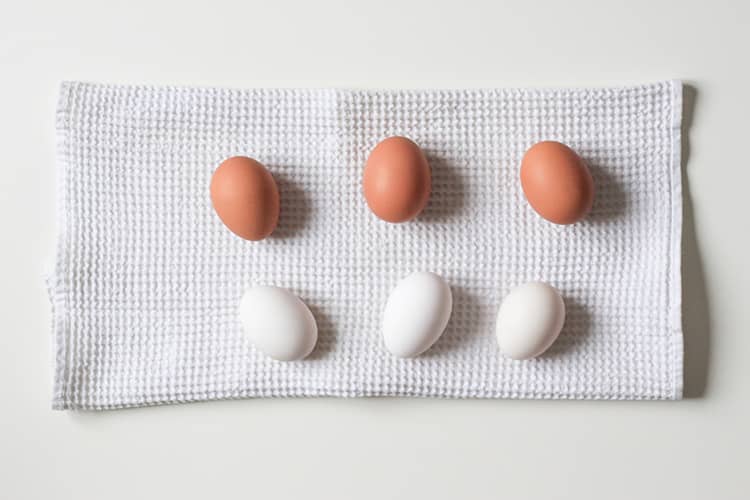
Another mistake that Shopify store owners make is not running A/B tests.
Facebook ad campaigns should have more than one ad set and more than one ad creative to ensure the best results. This allows for testing which audiences perform better and which ads are more effective.
We’ve even found cases where CBO (campaign budget optimization) was enabled even though there was only one ad set per campaign. CBO is a good approach that allows Facebook to optimize the ad performance and allocate more budget to better-performing ad groups. However, it has no purpose when there’s no testing involved – 100% of the campaign budget is allocated to your single ad set anyway.
7. No proper tracking
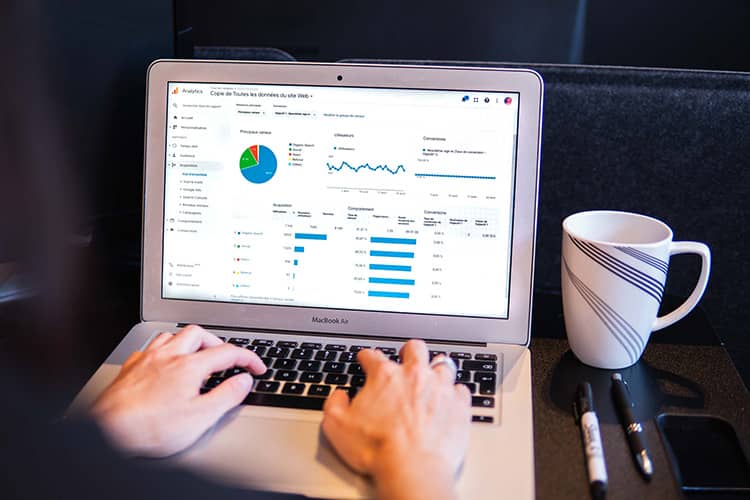
Facebook Analytics can give you a lot of useful information about your ad campaigns, but you won’t have a full picture.
That’s why it’s highly recommended to use UTM tracking and monitor your Facebook ads on Google Analytics or another analytics platform.
Google Analytics can offer more data on conversion tracking and an overall larger view.
For example, if you want to know when your customers convert, you can filter your “thank you page” sessions that your customers got to from your Facebook ads.
Most importantly, you can find out how your Facebook advertising strategy works with the rest of your marketing channels and see if you should scale your Facebook ad budget.
Why Facebook Ads Manager and Google Analytics show different results
You may notice that your Google Analytics account shows slightly different results for conversions than Ads Manager. The numbers don’t match not because something’s wrong but because Facebook and Google look at conversion attribution differently. Facebook gives the credit the first touchpoint for the conversion, while Google Analytics credits the last one.
How to check your Facebook ads on Google Analytics
You can start tracking Facebook ads on Google Analytics in three easy steps:
- Use Google’s Campaign URL Builder to make your links trackable.
- Use those links in your ads.
- Check the data on your Google Analytics account. You can filter your Facebook ads by source/media or campaign name.
8. Inconsistent ad campaign naming

One thing that many Shopify store owners do when launching their ad campaigns is giving them random names. Think “cat brush video” or “Valentine’s day offer.” However, it’s much more useful to use campaign naming conventions to name your ads
While random ad names may not be a big issue at the beginning, your frustration is likely to grow with each new ad you create. As your ad campaigns pile up and you need to make quick decisions fast, your ad names can either guide you or become a huge pain.
That’s why it’s recommended to have clear naming conventions on a campaign, ad set, and ad levels. This allows for a clear Facebook ad account structure. You can clearly see which ad creatives, audiences, and placements perform better and make needed adjustments to boost your sales.
How to create a good naming structure
You have three naming levels: campaign, ad set, and ad.
- Campaign naming. Helps to grasp the general idea.
Example: [Funnel stage]-[Product/Service Promoted]-[Objective]-[CBO if you’re using it] [target country]
- Ad set naming. What differentiates your ad sets.
Example: [general targeting (for example lookalike/interest etc.]-[Placement]-[Audience targeting]
- Ad naming. Here you can include information about the image or copy used.
Facebook is also gradually introducing a new feature for creating a name template in Ads Manager to make ad naming easier. Stay tuned!
9. Not starting with Automatic Placements
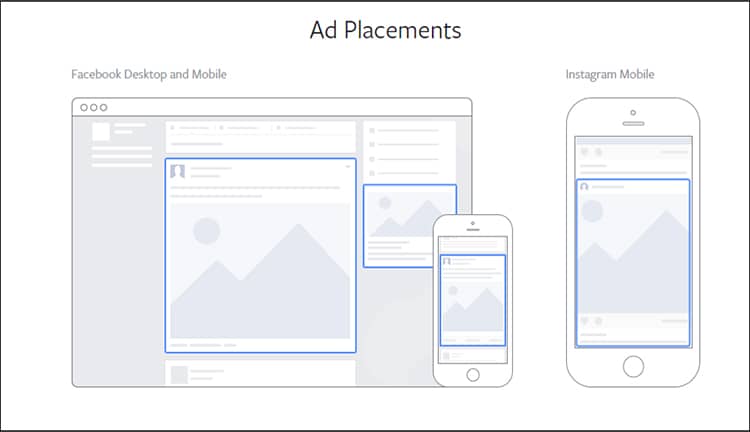
Even if you use the lowest cost bid strategy and monitor the costs for each placement that you choose manually, Automatic Placements is still a recommended option, especially if you’re just starting with Facebook advertising.
Automatic Placements runs your ads on all places available on Facebook, Instagram, Audience Network, and Messenger and lets you make the most of your ad budget.
This way, the ad delivery system has much more flexibility to get you the best results available from a wide range of options. Later, as optimization takes place, expensive placements can be turned off.
10. Using Boosted Facebook posts
A classic mistake Shopify store owners tend to make is relying too much on Boosted posts.
Boosted posts are very easy to set up – you simply click on a post on your feed, choose a few things like targeting and your budget, and you’re ready to go. You don’t even need to open the Ads Manager, dreaded by many Facebook advertising beginners. But here’s the catch – boosted ads won’t give you the best results if you want to drive sales.
Limited targeting options
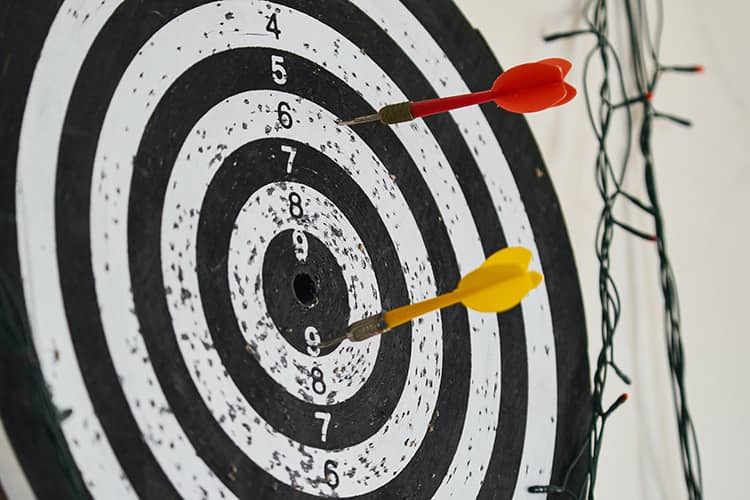
When you boost a post, your targeting options are very limited. You only get to choose the interests, age, and gender of your target audience. You’re missing out on all the advanced targeting capabilities that the Facebook pixel can offer you.
You also can’t use specific ad objectives like traffic, conversions, or lead generation that can help you maximize your ad budget. There’s a lot more regarding your ad creative and placement you’re missing out on, too.
The bottom line is – posts as ads should be used with caution. Whether you should run boosted or more advanced ads depends on your advertising goals.
When to use Boosted Facebook posts
If you want your Facebook ads to drive traffic and sales to your Shopify store, you need to create ads in the Facebook Ad Manager instead.
However, if your goal is to get more Facebook page fans and increase audience engagement, boosting a post is a great way to do it. It can help you build your social proof on Facebook, too. Just make sure you don’t allocate too much of your ad budget for getting page likes when you could be getting sales.
11. Not trying more ad types
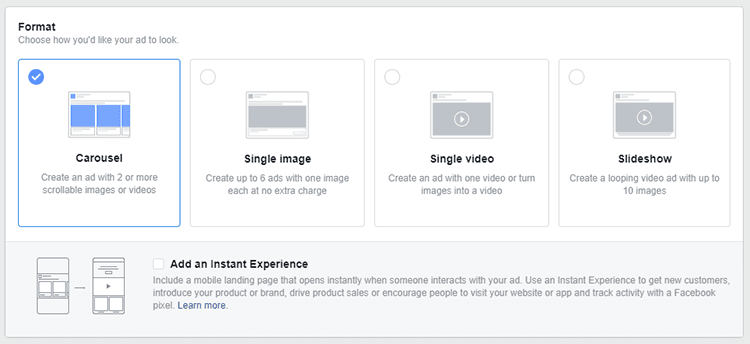
Our Facebook advertising audits have also shown that Shopify store owners tend to stick with one ad type, for example, an image ad, without even testing more ad formats.
A larger variety of ad formats should be used, such as carousel ads and instant experience ads. These ad types allow showing more products at once, which further reduces costs and increases the chance of customers finding products worth purchasing. Carousel ads, for example, allow for cheaper CPM, which can improve the marketing return on advertising spend (ROAS).
And don’t forget video ads! They need more investment upfront as you have to film the actual video, but it’s totally worth it. Video ads are the best way to tell your brand’s story and help you stand out from your competitors.
12. Writing generic ad texts

“Check our new lamp at 20% off!
Will I be tempted by the discount if I don’t even care about the lamp? Probably not.
In many cases that we see when analyzing ad copy, people tend to write generic, simple text in the ad headlines that don’t trigger any interest in the product. Or, even worse, the message is so salesy and overpromising, the ad looks borderline scammy.
Ad headlines should have an incentive for your target audience to click on your ad. Discounts work only when the product is relevant to your audience.
Also, make sure your ad text touches upon the key pain points of your customers. Instead of listing the bare facts about your product, think about how shoppers could benefit from using it.
If you’re creating the text for your video ads, make sure it tells a story, too. You need to evoke emotions in your target audience.
Finally, make your ad text scannable:
- write in short sentences;
- use bullet points;
- use emojis.
Check our article on copywriting tips for product pages for more ideas!
And don’t forget testing! It’s recommended to use at least two different options for your primary text and headline. This allows Facebook to test better-performing assets and optimize your ad delivery.
13. Using badly cropped images
Make sure your images are appropriately cropped for different ad placements.
This may seem like a bit of obvious advice, yet we still find Facebook ads with cropping issues. Since you’re paying for all your impressions, make sure your images are as professional as possible. At the very least, they should be nicely cropped and display your products clearly.
14. Not finishing the learning phase
When you launch a new Facebook ad, it enters the learning phase. During this time, the Facebook algorithm is looking for the best way to display your ads to your target audience.
Usually, the learning phase is over once your ad reaches 50 optimization events (the number of times your ad meets the goal it’s optimized for).
One thing that we saw Shopify store owners do which may interrupt the learning phase is setting up a lifetime budget for Facebook ads.
A lifetime budget means that there is a finite lifetime of the campaigns – Facebook doesn’t have enough time to exit the learning phase and deliver the ads to people who are most likely to convert.
It’s recommended to have a clear structure with “evergreen campaigns,” which could be optimized, tested, and compared against other campaigns.
Also, make sure you don’t make any significant edits to your Facebook ad that could interrupt the learning phase.
Here’s what you should avoid:
- any change to targeting, ad creative, or optimization event;
- changing the bid strategy.
- adding a new ad to your ad set;
- pausing your ad set for seven days or longer.
15. Not using a sales funnel
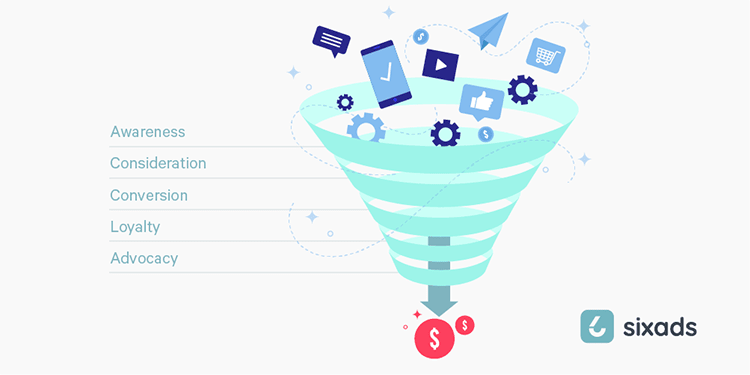
Once again, “Here’s my cool lamp, buy it now!” doesn’t really work in Facebook marketing.
What we, unfortunately, found while auditing Shopify stores is that their Facebook advertising efforts lack a clear strategy. The campaigns created don’t complete each other to create a sales funnel.
A proper sales funnel is a must if you want to create a conversion campaign on Facebook. To sell that quirky AliExpress lamp, you’ll need to have at least a few touchpoints with your cold audiences.
How to create a Facebook ad strategy for a Shopify store
First, you need to create Facebook ads to raise awareness for that cool product that you sell.
This is the stage where people don’t know they need your lamp yet. Show them how cool it would be to get one. Grab their attention! For example, you could target book lovers and show how much nicer it would be to read in bed with a cozy lamp.
Then, we move on to the consideration stage.
Here you want to run retargeting ads for people who visited your store but haven’t bought anything yet (make sure to exclude purchasers). At this stage, people are already interested in your lamp and may be comparing it with their other options. Retarget them with ads that show the benefits of your product.
Lastly, we move down to the decision stage of the funnel. Here you want to run remarketing ads again, but this time you can include a small discount, free shipping, or any other incentive to buy your lamp.
Finally, don’t forget to create a lookalike audience based on the people that bought your lamp! Then, use it to create even better reach campaigns for your awareness stage.
Shopify Facebook Ads: Key takeaways
- Invest more money into remarketing and dynamic product ads to drive sales.
Have an ongoing reach campaign to have a constant stream of people to retarget.
- Don’t use worldwide targeting if you don’t have a big budget for your Facebook ads.
- Narrow down your audiences for the best results. Also, use only one type of targeting on the ad set level for more reliable testing.
- Exclude purchasers from saved audiences not to waste your budget.
- Create lookalike audiences based on your best customers, not on your website traffic.
- Run A/B tests to optimize your ads and targeting.
- Use Google Analytics to get more insights about your Facebook ads.
- Use a consistent naming structure to name your ad campaigns, ad sets, and ads.
- Use Automatic Placements to give the ad delivery system more flexibility to get you the best results available from a wide range of options.
- Boost your posts only when you want to increase engagement on your Facebook page to build social proof. Use Ads Manager to create ads to get sales.
- Try more ad types before settling for a few ones. You can never know what works the best for you before you try, no matter what all the best practices say.
- Generic or overly salesy texts won’t make you money. Spend enough time to create quality ad copy. Try to focus on the benefits of your products, not their features.
- Crop your images according to the required dimensions for different ad placements.
- Don’t interrupt the learning phase to make sure the Facebook algorithm finds the best way to display your ads to your potential customers.
- Use a sales funnel so that your ad campaigns would complement each other to maximize your sales.
FAQ
Automate your Shopify Facebook ads!
The easiest way to avoid making Facebook ad mistakes is to leave the job to the professionals. With sixads, you can run your Facebook ads on autopilot in just a few easy steps. sixads gives you access to ready-to-buy audiences and sets up your Facebook ads for you. All you need to do is to approve the ads.
Get sixads now and enjoy Facebook ads that drive traffic and sales!



